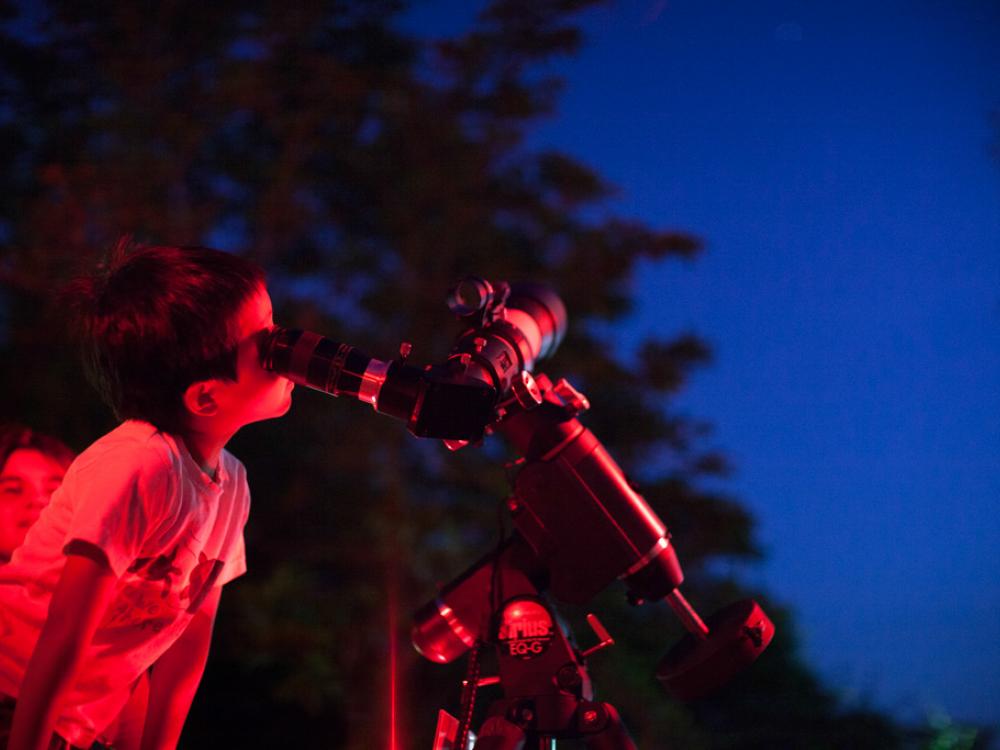
5 Things to Know About the Orionid Meteor Shower
Oct 20, 2017

Oct 20, 2017
Hoping to catch a view of the Orionid meteor shower this weekend? Here are the five things you need to know from the astronomy team at the Phoebe Waterman Haas Public Observatory:
What is a meteor?
When meteoroids (pieces of rock and dust from space) fall through Earth’s atmosphere and glow brightly, we call them meteors—though some say they look like “shooting stars.” Meteors fall very fast through the air, and the friction created between the meteor and the air particles causes them to heat up and glow. A meteor shower occurs when a larger amount of meteors than normal seem to be “shooting” from the same spot in the sky.
An image of the radiant of the Orionid meteor shower. The bright star near the radiant point is Betelgeus. Courtesy of EarthSky.
What is the Orionid meteor shower?
The Orionid meteor shower, which generally occurs between October 2 and November 7 each year, emanates from a spot near the constellation Orion to the east of the bright star Betelgeuse. Even though meteors fall to Earth every day, this particular meteor shower happens as Earth passes through the trail of debris left behind by Halley’s Comet.
What should you watch for?
Even though “shower” sounds like a lot, it’s more like a “sprinkling,” with up to 25 meteors falling per hour. Bring a blanket or a chair and get comfortable.
Where should you watch the Orionids?
The best place would be somewhere dark, away from street or city lights, where you can see as much of the sky as possible. If you can’t make it away from the city, a park or a rooftop with a view of the wide open sky could do the trick.
When should you watch?
The Orionids will peak on October 21 and 22. The best time to see this meteor shower is in the early morning hours before dawn—look straight up for the best view, but you may catch stray meteors in other parts of the sky!
We rely on the generous support of donors, sponsors, members, and other benefactors to share the history and impact of aviation and spaceflight, educate the public, and inspire future generations. With your help, we can continue to preserve and safeguard the world’s most comprehensive collection of artifacts representing the great achievements of flight and space exploration.